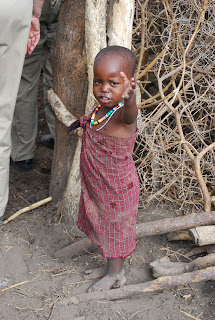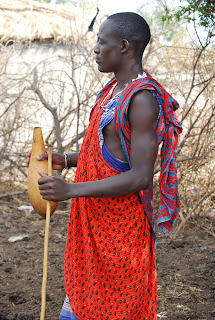Remember you can click any photo to see it larger, and at the bottom of each page, keep clicking "Older Posts" to see the remaining photos of the trip.
First stop in Arusha, the capital city, was the Shanga Shangaa (http://www.shanga.org/Shanga.html), which provides work opportunities for disabled people. I was interested in going because they make beads from recycled bottle glass, but they do much more, including making sewn goods, metalwork, and even run a restaurant along the stream that borders the property.

Bad photo, I know; I was having camera problems, but here you can see woman sewing on pedal-operated machines, backed by strings of wine bottles.
 Old bicycle parts run some of the glass grinding operations.
Old bicycle parts run some of the glass grinding operations. Arusha's sparkling modern cultural heritage center, which has a wonderful art gallery and a shop selling anything and everything a tourist to East Africa might want (including, of course, tanzanite)
Arusha's sparkling modern cultural heritage center, which has a wonderful art gallery and a shop selling anything and everything a tourist to East Africa might want (including, of course, tanzanite)

 A friendly card game among the local critters:
A friendly card game among the local critters:















































